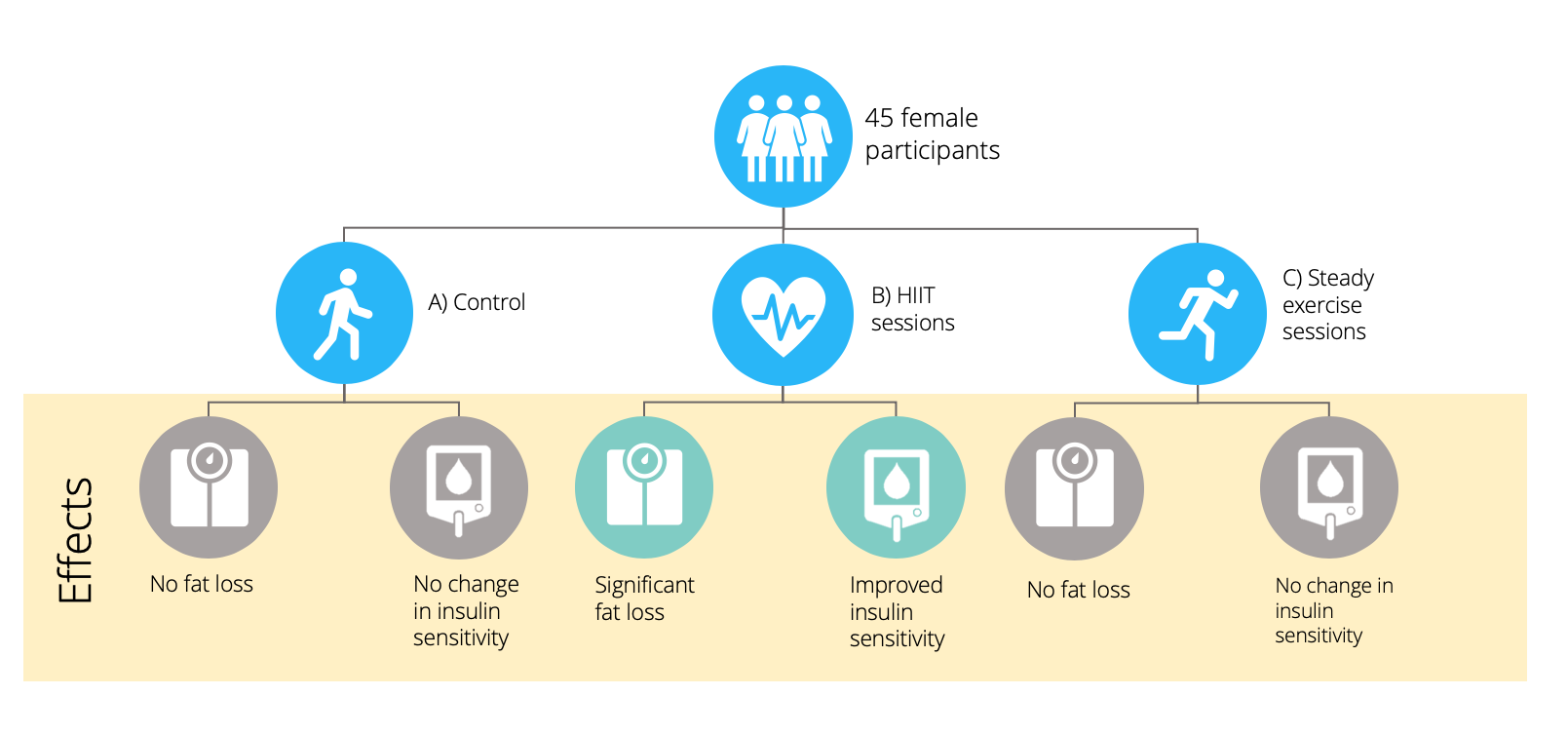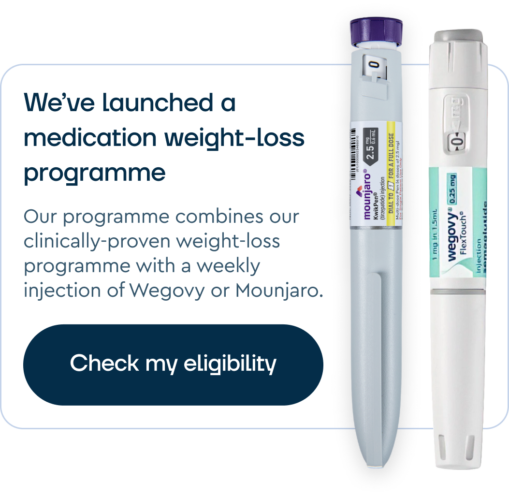Myth: ‘Exercise is only beneficial if it’s performed for long periods of time.’
‘I just don’t have time to exercise’ is a common reason for doing little physical activity. Between jobs, families, and social events, it can be difficult to find time to exercise.
Many people believe that to benefit from exercise, you must perform it for long periods at a time. This thought appeals to the all-or-nothing mindset, where you avoid exercise all together since you only have 15 minutes spare and ‘what can be achieved in 15 minutes?’.
In reality, a lot can be achieved in a short time. Exercising for shorter, more intense periods can provide just as many, if not more, health benefits than longer, less intense exercise sessions. Shorter bursts of exercise are also much more time efficient, which is easier to fit into a busy schedule.
This isn’t to say that long periods of less intense exercise are not beneficial. This type of exercise, such as long walks or yoga, can greatly improve your mental health and quality of sleep. However, when you’re stretched for time, here are some reasons to try and get your heart rate up, even if it’s only 5 minutes here and there.
Weight loss
Researchers from Australia conducted a research review investigating the effects of high-intensity interval training (HIIT) on fat mass, VO2 Max (a measure of aerobic fitness) and insulin sensitivity. Reduced insulin sensitivity results in consistently high blood sugar, which can lead to type 2 diabetes.
The studies included in the review varied slightly in their interventions, but typically participants completed short bursts of exercise for 30 seconds, 3 times a day, 3 times a week for 2-24 weeks. The exercise was either running on a treadmill or cycling on a stationary bike. Findings demonstrated that fat mass significantly decreased, VO2 max increased, and insulin sensitivity increased.
But how does HIIT compare to less intense, longer periods of exercise, such as running? One clinical trial compared:
A) Control group (little exercise)
B) HIIT group (3 weekly 20-minute workout sessions of HIIT)
C) Steady exercise (3 weekly 40-minute workout sessions of cardio)
over 15 weeks and measured the impact on weight. They found that both group A) and C) demonstrated no weight loss, whereas the average weight loss in group B) was over 2kg and significantly more than the other groups. Groups B) and C) showed an increase in VO2 max.
 A potential explanation for these findings is that HIIT has a positive impact on certain stress hormones released by the kidney that accelerate fat oxidation. This means HIIT might encourage your body to ‘burn’ more fat over regular aerobic exercise. So, any form of exercise can improve your fitness levels but if weight loss is your goal, HIIT could be more effective than longer, less intense periods of exercise.
A potential explanation for these findings is that HIIT has a positive impact on certain stress hormones released by the kidney that accelerate fat oxidation. This means HIIT might encourage your body to ‘burn’ more fat over regular aerobic exercise. So, any form of exercise can improve your fitness levels but if weight loss is your goal, HIIT could be more effective than longer, less intense periods of exercise.
Key points:
- All types of exercise are beneficial for your fitness and health.
- Short bursts of high-intensity exercise are more effective for weight loss than longer periods of less intense exercise.
Blood sugar control
Blood sugar levels are controlled by the hormone insulin. Insulin regulates blood glucose (sugar) levels by signalling to the body to remove glucose from the blood and store it as glycogen in our muscles and liver for when we need it. If our bodies become resistant to insulin and blood glucose levels are consistently high, there is a risk of developing type 2 diabetes.
The trial mentioned above demonstrated how HIIT improved insulin sensitivity. The more sensitive we are to insulin, the better our blood glucose control.
The changes in insulin sensitivity were significantly related to the changes in weight. Since insulin resistance and weight gain are usually interlinked, HIIT has huge potential benefits for those with prediabetes or type 2 diabetes.
Key point:
- Short bursts of high-intensity exercise positively impact blood sugar levels.
Heart health
The British Medical Journal published a large meta-analysis of research that compared HIIT with lower-intensity, longer periods of exercise in individuals living with chronic diseases where unhealthy lifestyle was the main contributing factor (such as type 2 diabetes). Results indicated that HIIT was more beneficial to heart health than lower-intensity, longer periods of exercise.
The researches suggested that stiffness of the arteries plays a large part in cardiovascular problems (heart attacks, strokes etc). They suggested that when the short bursts of exercise are of a high enough intensity, it promotes elasticity of the arteries, which in turn reduces the risk of heart attacks and strokes. This was supported by numerous studies in the review that found increased nitric oxide release in HIIT groups, which seems to promote elasticity of the arteries.
Key point:
- Short bursts of high-intensity exercise may reduce the risk of cardiovascular problems more than longer periods of less intense exercise.
How to incorporate HIIT into your day
Whether you exercise regularly or are completely new to it, below are some simple ways to include short bursts of exercise into your daily routine.
Beginner
The moment you wake: star jumps – 1 minute
Mid-morning coffee: wall push-ups (edge of table/kitchen counter/wall) – 1 minute
Lunch break: squats – 1 minute
When you get home: jogging on the spot – 1 minute
Intermediate
The moment you wake: mountain climbers – 1 minute
Mid-morning coffee: push-ups – 1 minute
Lunch break: squat jumps – 1 minute
When you get home: running on the spot – 1 minute
Advanced
The moment you wake: crossover mountain climbers – 1 minute
Mid-morning coffee: push-ups with clap – 1 minute
Lunch break: lunge jumps – 1 minute
When you get home: burpees – 1 minute
Take home message
- It is a myth that you have to exercise for long periods of time for it to be effective.
- Shorter, more intense bursts of exercise appear to be more effective for weight loss, blood glucose control, and heart health.
- It is easy to fit in small amounts of HIIT exercise throughout the day by doing as little as a minute here and there.

